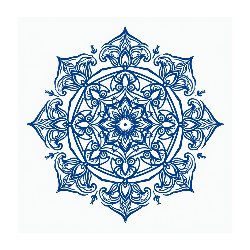
OKRs for Product Teams: Aligning Strategy, Execution, and Growth
Driving Alignment in Product Teams
A Product Team performs at its best when everyone is pulling in the same direction – when the goals are clear, priorities are understood, and execution aligns with strategy. Objectives and Key Results (OKRs) give teams this clarity.
Instead of vague targets or top-down directives, OKRs create a transparent system that connects long-term company goals with daily work. At Product Siddha, we’ve seen that teams using OKRs gain sharper focus, stronger accountability, and faster progress toward measurable outcomes.
Unlike traditional goal-setting, OKRs push teams to define what truly matters and how success will be measured. This focus helps eliminate confusion, align cross-functional teams, and reduce the friction that often comes from competing priorities.
Why OKRs Matter for Product Teams
For modern product teams – juggling customer demands, stakeholder expectations, and market shifts – OKRs serve as a unifying compass. They deliver:
- Strategic Alignment: Translating company vision into product-level goals.
- Focused Execution: Prioritizing high-impact work instead of reacting to every request.
- Measurable Growth: Tracking tangible outcomes tied to user or revenue impact.
- Cross-Functional Collaboration: Bringing design, engineering, and marketing into a shared framework.
When implemented correctly, OKRs help product teams continuously evaluate performance, adapt quickly, and maintain alignment with the organization’s broader strategy.
Building OKRs for Product Teams
Step 1: Define Objectives
Objectives should inspire and stretch the team – yet remain achievable. For example, an objective might be:
“Improve the user onboarding experience for our SaaS platform.”
This objective focuses the team on user value rather than just deliverables.
Step 2: Identify Key Results
Key results must be measurable and time-bound. Example:
- Increase 7-day user retention from 45% to 60%
- Reduce onboarding drop-off rate by 25%
Step 3: Align Across Teams
OKRs work best when everyone can see how their work fits the bigger picture. Product, engineering, design, and marketing should all share visibility into OKR dashboards and progress metrics.
Step 4: Track and Adjust
Regular reviews – often weekly or bi-weekly – allow teams to refine priorities and pivot when needed. Transparency builds motivation and accountability.
Case Study: Google’s OKRs Spark a Global Movement
Google popularized OKRs shortly after their early adoption in 1999. The company’s leaders used OKRs to translate their audacious mission – “organize the world’s information” – into measurable outcomes.
For example, the Chrome browser team used OKRs to improve page load speed and adoption rates. These measurable goals led to Chrome capturing over 60% of the global browser market within a decade.
The key takeaway for product teams: OKRs don’t just guide execution; they help define what success looks like and make progress visible.
Case Study: Spotify’s Squads and OKRs
Spotify, famous for its “Squad” model, uses OKRs to keep hundreds of autonomous product teams aligned. Each squad sets quarterly OKRs that tie directly to broader company themes – such as engagement, user retention, or discovery.
This approach allows flexibility in execution but consistency in direction. For example, when Spotify launched its podcast expansion, OKRs focused on improving daily active listening time and creator onboarding speed, both of which helped drive platform growth in new markets.
Case Study: Product Siddha’s Work with a SaaS Platform
A fast-scaling SaaS company partnered with Product Siddha to improve product development alignment. The team struggled with feature overload and unclear priorities.
Approach:
- Conducted OKR workshops across product, design, and engineering teams
- Created measurable results tied to adoption, churn reduction, and time-to-market
- Integrated OKRs into Jira dashboards for transparent tracking
Results:
- Time-to-market for key features dropped by 30%
- Product adoption grew 20% within three months
- Collaboration between engineering and product improved dramatically
This project proved that structured OKRs can bring order, focus, and momentum to even fast-paced SaaS environments.
Best Practices for Product Teams Using OKRs
- Limit the number of OKRs: Focus on 3–5 key objectives per quarter.
- Ensure measurability: Every key result should have a clear, trackable metric.
- Set ambitious targets: OKRs should challenge teams without demotivating them.
- Integrate with daily tools: Link OKRs into systems like Asana, Jira, or ClickUp for visibility.
- Reflect and recalibrate: Use end-of-quarter reviews to evaluate learnings and refine focus.
Case Study: Atlassian’s Data-Driven OKRs
Atlassian uses OKRs to maintain alignment between its product and customer experience teams. One quarter, the Jira team set an OKR to reduce “time to first value” for new customers by 20%.
Through small, measurable UX improvements and onboarding redesign, they exceeded that target – cutting the time by 27%. The result was a visible lift in user satisfaction and trial-to-paid conversions.
Challenges in Implementing OKRs
Even strong teams struggle to get OKRs right. Common pitfalls include:
- Poor alignment: Objectives don’t tie back to the company’s strategy.
- Lack of buy-in: Teams treat OKRs as paperwork instead of a shared mission.
- Overemphasis on metrics: Quantitative focus without qualitative insight (like UX or morale).
At Product Siddha, we help teams find the right balance – defining OKRs that are ambitious yet realistic, data-driven yet human-focused.
Integrating OKRs into Growth Strategies
When used consistently, OKRs become a strategic growth framework, not just a measurement system. Product teams can:
- Focus on features that drive real user impact
- Accelerate launches by aligning cross-functional priorities
- Track engagement metrics to guide roadmap decisions
- Adjust goals dynamically based on real-time insights
Airbnb is a great example – they used OKRs during their early scaling years to prioritize host growth and trust features. This discipline helped them stay consistent across markets while growing globally.
Aligning Strategy and Execution for Product Success
Effective OKRs empower product teams to bridge the gap between vision and action. They bring strategy, execution, and learning into a single rhythm of progress.
At Product Siddha, our experience shows that when teams align around clear OKRs, they stop firefighting and start forecasting – shifting from reactive to proactive product leadership.
In a fast-moving market, OKRs aren’t just a management tool; they’re a growth mindset – helping every product team stay focused on impact, alignment, and sustainable results.
